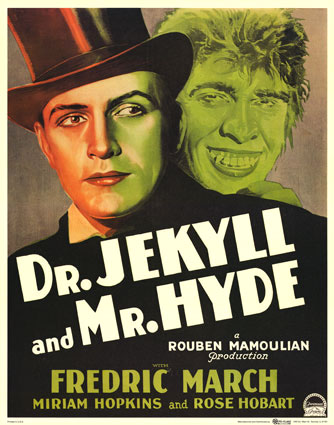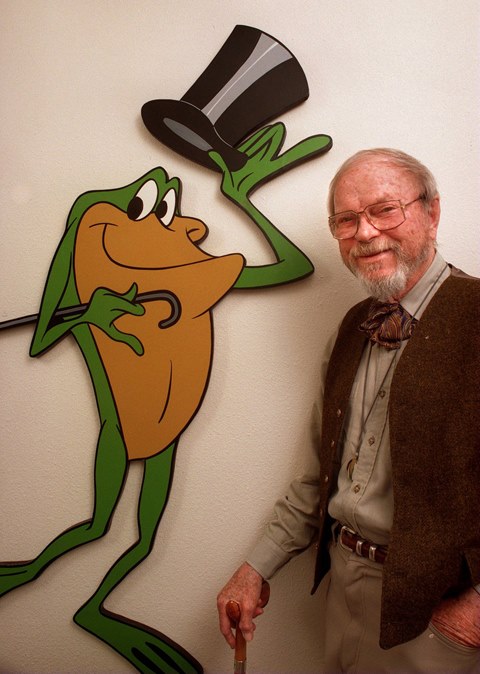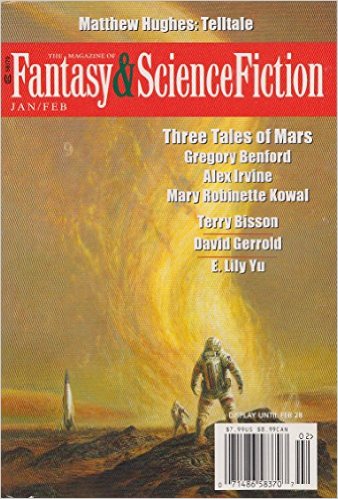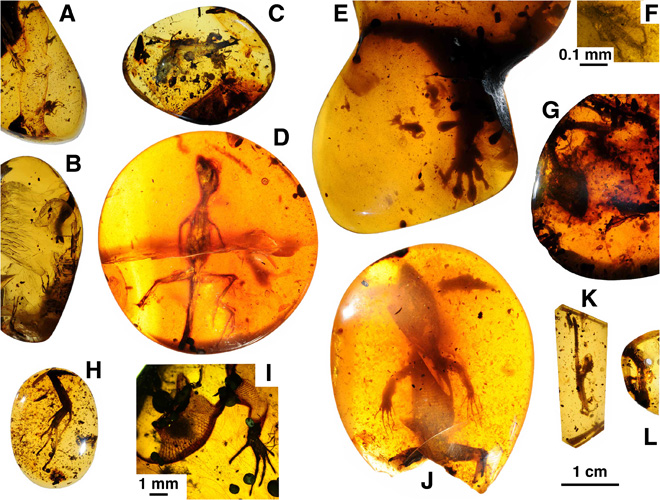(1) ON ITS WAY TO BEING DEADJOURNAL? LiveJournal was purchased by a Russian company in 2007 but continued to operate on U.S.-based servers until this month. According to Metafilter —
As of a few days ago, the IP addresses for blogging service LiveJournal have moved to 81.19.74.*, a block that lookup services locate in Moscow, Russia. Now users — especially those who do not trust the Russian government — are leaving the platform and advising others to leave.
For years, the online blogging community LiveJournal — popular in Russia, Belarus, and the Ukraine — has served as a key communications platform for Russian dissidents (the Committee to Protect Journalists earlier this month called on Russian authorities to release a LiveJournal user who has been sentenced to 2 years in prison for a critical blog post). Even after Russian company SUP bought it from California-based Six Apart in 2007 (previously), the fact that SUP continued to run the servers in the US meant that users felt relatively safe; a 2009 press release specifically said that LiveJournal, Inc.* would continue to run technical operations and servers in the United States (and claimed that 5.7 million LiveJournal users were Russia-based).
(2) REANIMATION NOW A HOLLYWOOD ISSUE. “Actors seek posthumous protections after big-screen resurrections” – Reuters has the story.
California law already gives heirs control over actors’ posthumous profits by requiring their permission for any of use of their likeness. As technology has improved, many living actors there are more focused on steering their legacy with stipulations on how their images are used – or by forbidding their use.
Robin Williams, who committed suicide in 2014, banned any use of his image for commercial means until 2039, according to court documents. He also blocked anyone from digitally inserting him into a movie or TV scene or using a hologram, as was done with rapper Tupac Shakur at Southern California’s Coachella music festival in 2012 – 16 years after his murder.
Virtual characters have been used when an actor dies in the middle of a film production, as when Universal Pictures combined CGI and previous footage for Paul Walker’s role in 2015’s “Furious 7” after Walker’s 2013 death in a car crash.
But “Rogue One” broke new ground by giving a significant supporting role to a dead star. A digital embodiment of British actor Peter Cushing, who died in 1994, reprised his role from the original 1997 “Star Wars” film as Tarkin.
Walt Disney Co recreated Tarkin with a mix of visual effects and a different actor.
A Disney spokeswoman declined to comment on whether Princess Leia would appear in films beyond “Episode VIII,” set for release in 2017. Fisher had wrapped filming for the next “Star Wars” episode before she died. She suffered a heart attack on a flight from London to Los Angeles.
(3) ALL ROMANCE EBOOKS CLOSES. Quoting from JJ in a comment on yesterday’s Scroll:
Kristine Kathryn Rusch has made a public posting on Patreon: “All Romance Ebooks and its sister website Omnilit did something incredibly awful on December 28, 2016. It sent out a handful of emails, letting writers, publishers, readers, and others know that it was shutting its doors four days later.”
This is a really well-thought-out and helpful piece. The TL;DR is: 1) if you’re an author who was using them as a distributor, get your rights reverted immediately; 2) if you’re a reader who bought books through them, get them copied to your computer immediately.
There’s a lot more helpful advice for affected authors in there. I really hope that no Filers are affected by this, and I feel bad for all authors who were involved with that business; they are almost certainly not going to get any money they are owed.
Part of what Rusch explained:
ARe is a distributor, mostly, and so it is dealing with its writers as suppliers and unsecured creditors. I’ve been through a bunch of distributor closings, many in the late 1990s, with paper books, and they all happen like this.
One day, everything works, and the next, the distributor is closed for good. In some ways, ARe is unusual in that it gave its suppliers and creditors four days notice. Most places just close their doors, period.
I’m not defending ARe. I’m saying they’re no different than any other company that has gone out of business like this. Traditional publishers have had to deal with this kind of crap for decades. Some comic book companies went out of business as comic book distributors collapsed over the past 25 years. Such closures have incredible (bad) ripple effects. In the past, writers have lost entire careers because of these closures, but haven’t known why, because the publishing house had to cope with the direct losses when the distributor went down.
The difference here is that ARe wasn’t dealing with a dozen other companies. It was dealing with hundreds, maybe thousands, of writers individually, as well as publishers. So, writers are seeing this distribution collapse firsthand instead of secondhand.
To further complicate matters, ARe acted as a publisher for some authors, and is offering them no compensation whatsoever, not even that horrid 10 cents on the dollar (which, I have to say, I’ll be surprised if they pay even that).
(4) NZ ORDER OF MERIT. Professor Anthony Phillip Mann, a Sir Julius Vogel winner whose novel The Disestablishment of Paradise was a finalist for the Clarke and Campbell Awards, has been named a Member of the New Zealand Order of Merit, for services to literature and drama.
(5) NOMINATIONS OPEN FOR SIR JULIUS VOGEL. Nominations for the 2017 Sir Julius Vogel awards are being accepted until 8.00 p.m. on March 31, 2017.
The awards recognise excellence and achhievement in science fiction, fantasy, or horror works created by New Zealanders and New Zealand residents, and first published or released in the 2016 calendar year.
We are using a web-based system for nominations this year to aid our administrative processes. Full information about the awards, including the rules and criteria for the Sir Julius Vogel Award, can be found here.
Anyone can make a nomination and it is free! To make a nomination, go to http://www.sffanz.org.nz/sjv/sjvAwards.shtml and fill out the web-based nomination form.
Get busy reading NZ authors and watching NZ movies to find work to nominate. We have a list of New Zealand works that may be eligible for nomination here.
(6) CAMPBELL AWARD. Mark-kitteh reports, “Writertopia have set their Campbell Award eligibility page to 2017 mode. It’s obviously very sparse on 1st year eligibility at the moment, but there are a few new entries already.”
The John W. Campbell Award uses the same nomination and voting mechanism as the Hugo, even though the Campbell Award is not a Hugo.
Like the Hugo Awards, the Campbell Award voting takes place in two stages. The first stage, nomination, is open to anyone who had a Supporting or Attending membership in the previous, current, or following year’s Worldcon as of January 31. For Worldcon 75 in Helsinki, this means members of MidAmeriCon II, Worldcon 75 itself, and Worldcon 76 can nominate any eligible author. This web page helps identify eligible authors for the Campbell Award.
The official nomination page will be posted when it is available on the Worldcon 75 website. Nominations will likely close on March 31, 2017.
To be able to vote for the award, you must be a member of Worldcon 75 in Helsinki. If you are not a member of Worldcon 75 and wish to vote, you must purchase a supporting membership or an attending membership before January 31.
(7) COVERS REVEALED. Greg Ruth’s cover art for Nnedi Okorafor’s Akata Witch and Akata Warrior has debuted online. Ruth wrote —
We often in art mistake race for color, and what this taught me was a way to skip past those initial assumptions and get right to the heart of her structure rather than her tone. This meant a lot of research into what physical features are distinctively Nigerian, and bringing those to bear on this young woman. She had to, without leaning on skin color, be authentically Nigerian and herself as a true native of her culture in every bit as much the same way in which I might need to address and accomplish the same for a Cambodian scientist, or an Icelandic luthier. We all within our tribes carry specific physical marks that stem from our localized familial genetics. Folks of a Rwandan Tutsi heritage have different physical features even from Rwandan Hutu people due to the way we as people form our tribes via family and region. Whether or not my own self-aware whiteness drove me to paying especial attention to these subtle but significant differences, or whether it was just about cleaving close to that aforementioned ethic of art making to be its best and truly objective self, I can’t say. But I do confess to feeling as someone coming from a different cultural experience, I owe a lot to research as a means to be the best scribe for the cultural truths and realities of one that is not mine. That means, int he case of INDEH, years of research, tracking tribal origins, genetic traits and societal issues so that the Apaches look like Apaches, especially to actual real Apaches. If I had done this first as part of this ongoing series, I am not sure I would have been able to if I were being honest. I think I needed to do the other three to fully grok what it was this pair of images needed to have done. It was entirely essential to this potential hubris that Nnedi had been so excited about the previous three- and particularly to have been so spot on with them both culturally and inherent in her mind to the characters as she see saw them. Her words brought great comfort to me in times of doubt- (Thanks Nnedi!).
(8) HINES AUCTION RESULTS. Jim C. Hines’ fundraiser for Transgender Michigan brought in $1,655.55.
We know transgender youth are at a higher risk of depression and suicide, and these coming months and years could be very difficult. So I’m proud and grateful to announce that with the help of some SF/F friends and the generosity of everyone who bid and donated, we raised a total of $1,655.55 to help Transgender Michigan continue their important work.
I wanted to pass along this thank you from Susan Crocker of Transgender Michigan:
Transgender Michigan would like to thank everyone involved with the fundraiser auctions run by Jim C. Hines. All of you are helping us provide services to the transgender communities of Michigan and beyond. This will help our help line, chapters, referral system, community building, and advocacy.
(9) RULES VARIATION. Cheryl Morgan has “Arabian Nights Questions”:
Something else I did over Christmas, as a bit of a break from the Wagnerthon, was remind myself of the rules for Arabian Nights, just in case I should end up in a game at Chance & Counters. There are solo play rules, and it didn’t take long to get back into the swing of things (not to mention crippled, enslaved, and ensorcelled). However, a couple of questions occurred to me along the way and I was wondering if anyone out there could enlighten me.
First up, I remember from playing the original version that you were not allowed to win if you were gender-swapped. Indeed, I wrote a whole blog post about that a couple of years ago. Checking the rules of the new edition it appears that rule has been dropped. The card for Geas still says you can’t win while you have that status, but no other statuses seem to have that effect. Can anyone confirm this, or have I missed something?
(10) WONG OBIT. Tyrus Wong (1910-2016) who worked on Disney’s Bambi, died December 30 according to the New York Times.
When Walt Disney’s “Bambi” opened in 1942, critics praised its spare, haunting visual style, vastly different from anything Disney had done before. But what they did not know was that the film’s striking appearance had been created by a Chinese immigrant artist, who took as his inspiration the landscape paintings of the Song dynasty. The extent of his contribution to “Bambi,” which remains a high-water mark for film animation, would not be widely known for decades
(11) TODAY IN HISTORY
- December 31, 1931 — A doctor faces horrible consequences when he lets his dark side run wild in Dr.Jekyll and Mr. Hyde, seen for the first time on this day. This was the first horror movie ever to win an Academy Award, it was for Best Actor. The movie was also nominated for Best Writing Adapted Screenplay and Best Cinematography.

- December 31, 1935 — C. B. Darrow received a patent for his Monopoly game.
- December 31, 1958 — Cosmic Monsters, aka The Strange World of Planet X, opens.
(12) TODAY’S BIRTHDAY AMPHIBIAN
- Born December 31, 1955 — Michigan J. Frog, pictured with his dad, Chuck Jones.

(13) PROGRAM BREAKERS. The BBC discusses examples of names that break computer systems.
Some individuals only have a single name, not a forename and surname. Others have surnames that are just one letter. Problems with such names have been reported before. Consider also the experiences of Janice Keihanaikukauakahihulihe’ekahaunaele, a Hawaiian woman who complained that state ID cards should allow citizens to display surnames even as long as hers – which is 36 characters in total. In the end, government computer systems were updated to have greater flexibility in this area.
Incidents like this are known, in computing terminology, as “edge cases” – that is, unexpected and problematic cases for which the system was not designed.
I remember cracking up when I read an Ann Landers column about the soldier who didn’t have a regular name, just two initials, and once the military had processed him he was legally stuck with the name “Bonly Nonly.”
(14) PRESTIDIGITIZATION. Rich Lynch announces, “From out of the mists of nearly 30 years past, the third issue of the fanzine Mimosa is now online. You can view it here: Mimosa #3.”
“Like everything else on the Mimosa website, the issue has been put online in eye-friendly HTML format. This will make it easier to view, as it was originally published in two-column format and you do not need to turn pages to read an article in its entirety.”
Rich has also launched the 17th issue of his personal fanthology My Back Pages at eFanzines.com.
Issue #17 is a year-end collection that starts with a long and at times strange journey, and includes essays involving teetering glass display cases, sweaty dinner expeditions, accusations of spying, protected sanctuaries, icy traverses, well-attired mountain climbs, earthquake epicenters, frigid hitchhikes, altitude-challenged terrain, river confluences, photography challenges, clear skies, city park pow-wows, employment outsourcing, focal-point fanzines, woodland views from on high, Viennese composers, good and bad winter weather, entertaining musicals, minimalist paintings, subway mosaics, and the New York City street grid. This issue also, for the first time in the run, includes a previously unpublished essay.”
(15) LEGENDS OF THE FALL. Jo Lindsay Walton’s blog has an impressive origin story, but he may be throttling back in 2017.
Superadded to this general siege of opinion, I had started to feel that those closest to me would sometimes, in a real casual way, slip into conversation a chance remark, not obviously aimed at me, which intimated that to hide one’s l33t under a bushel might itself be construed as vanity, and that in a way wouldn’t you say that, like, the most ostentatious blog you can have as a white middle class western cis man is no blog at all — the eyes flick anxiously to mine, linger an unsettling instant, flick away. I caved. My caving is all around you. In the end it was probably the dramatis personae itself that did it: what was reiterated strategum by strategum, however laughable the local strategic design, was this bald provocation: if so many millions of entities, living, dead, exotic, imaginary, could draw together under this one bloggenic banner, if Alex Dally MacFarlane, Alice Tarbuck, and Aliette de Bodard, if Amal El-Mohtar, Amy Sterling Casil, and Ann Leckie, if Anna MacFarlane, Benjanun Sriduangkaew, and Brad R. Torgersen?, if Carol Emshwiller, Catherynne M. Valente, and China Miéville, if Christina Scholz, Chuck Tingle, and Connie Willis, if Elizabeth Jones, George O. Smith, and George RR Martin, if Gillian Anderson, Harlan Ellison, and Jack Vance, if Jim Butcher, John C. Wright, and John Scalzi, if Jonah Sutton-Morse, Joseph Tomaras, and Kate Paulk, if Kathy Acker, Kevin J. Anderson, and Kim Stanley Robinson, if Kir Bulychev, Lois McMaster Bujold, and L. Ron Hubbard, if Larry Correia, Laura J. Mixon, and Lavie Tidhar, if Margaret Cavendish, N.K. Jemisin, and Nalo Hopkinson, if Naomi Novik, Nick Mamatas, and Paul Weimer, if R.A. Lafferty, Renay, and Robert Heinlein, if Robert Jordan, Rochita Loenen-Ruiz, and Saladin Ahmed, if Sarah Hoyt, Sofia Samatar, and Sophie Mayer, if Steven Gould, Tricia Sullivan, and Vox Day, if countless others, could all make cause together to beg this one blog of me, if even Alice Bradley Sheldon and James Tiptree Jnr. could set aside their differences to ask this one thing, why then could I not set my false modesty aside, look into my historically-determined and socially-constructed heart, and blog? But now the PhD is kinda done, so … well, this will probably go a bit dormant now.
A volcano puffing out the odd mothball.
(16) PAGES TURNED. Abigail Nussbaum closes out with “2016, Year in Reading: Best Reads of the Year” at Asking the Wrong Questions.
The Winged Histories by Sofia Samatar (review) I wrote several thousand words about Samatar’s second novel, the companion piece to her equally wonderful A Stranger in Olondria, earlier this year, and yet I still don’t feel that I’ve fully grappled with how special and revolutionary this book is. This despite the fact that Histories initially feels a great deal more conventional, and much easier to sum up, than Olondria. Its use of familiar epic fantasy tropes and styles is more pronounced than the previous novel, and whereas Olondria circled around the edges of a fantasyland civil war, Histories sets its story almost in the middle of it. What ultimately becomes clear, however, is that just like the hero of A Stranger in Olondria, the four women who tell the story of The Winged Histories are trying to give shape to their lives by casting them into literary forms–in this case, the forms of epic fantasy, even if none of them are aware of that genre or would call it that. And, one by one, they discover the limitations of those forms, especially where women and colonized people are concerned. Not unlike Olondria, The Winged Histories is ultimately forced to ask whether it is even possible for people to tell their own stories using the tropes and tools left to them by their oppressors. If the entire purpose of your existence is to be the Other, or the object, in someone else’s story, can you ever take their words, their forms, and make it a story about yourself? For most of the novel’s characters, the solution is ultimately to fall silent, and yet The Winged Histories itself rings loudly. As much as it is a rebuke of the fantasy genre, it is also a major work within it, and one that deserves more discussion and attention than it has received.
(17) KYRA LOOKS BACK AT 2016. In comments, Kyra sketched some mini-reviews of what she read this past year.
(18) SOME GOOD IN 2016 AFTER ALL. Creature Features, the Burbank collectibles store, put together a tribute to 2016 sff.
[Thanks to JJ, Andrew Porter, Kip W, Joe Rico, and John King Tarpinian for some of these stories. Title credit goes to File 770 contributing editor of the day Ken Richards.]
 All nomination ballots must be postmarked by March 17, 2017 or submitted by 11:59 p.m. Pacific Daylight Time on March 17.
All nomination ballots must be postmarked by March 17, 2017 or submitted by 11:59 p.m. Pacific Daylight Time on March 17.





